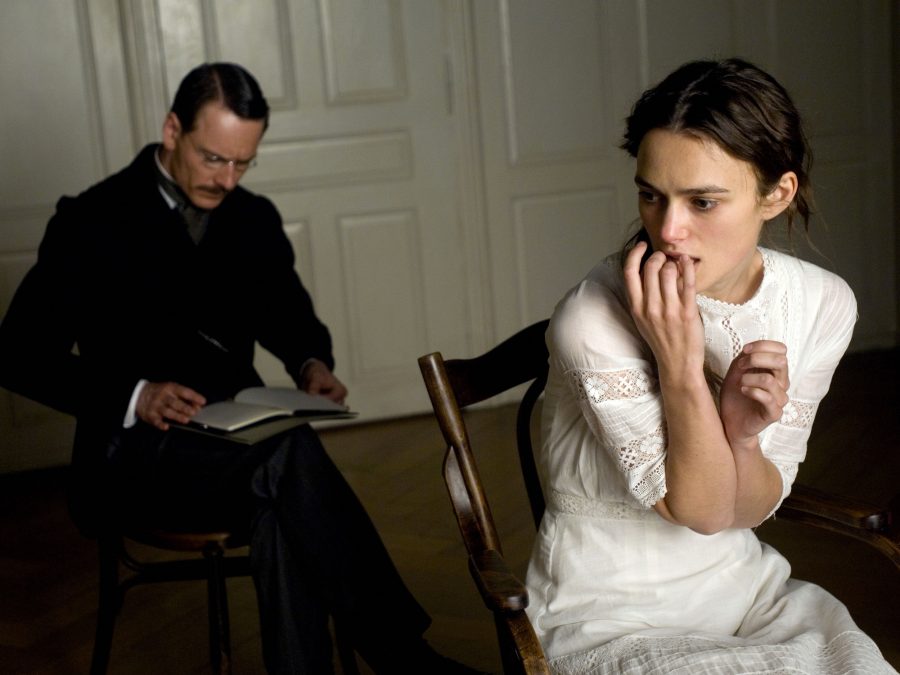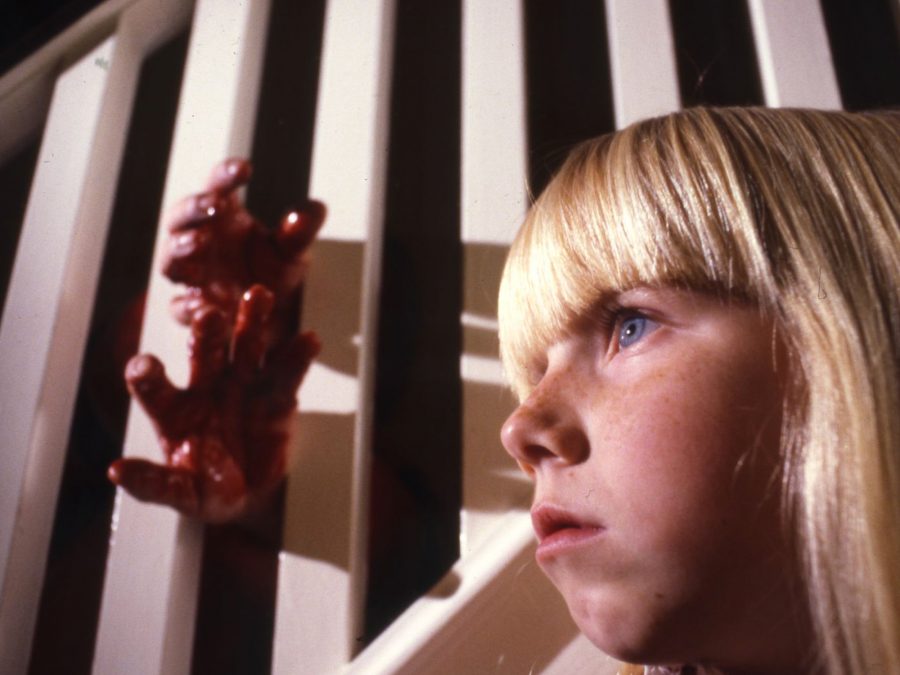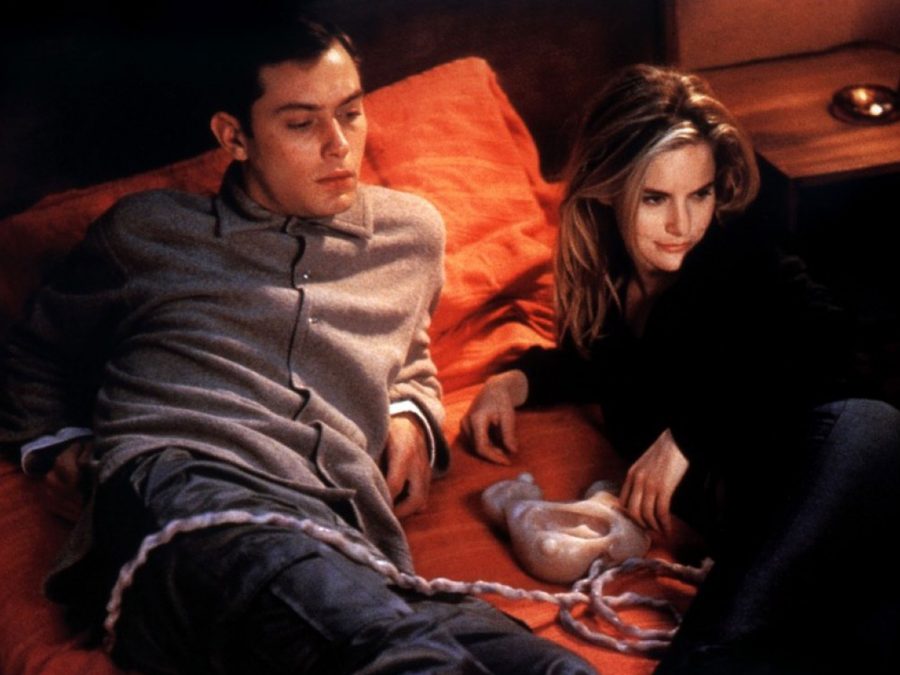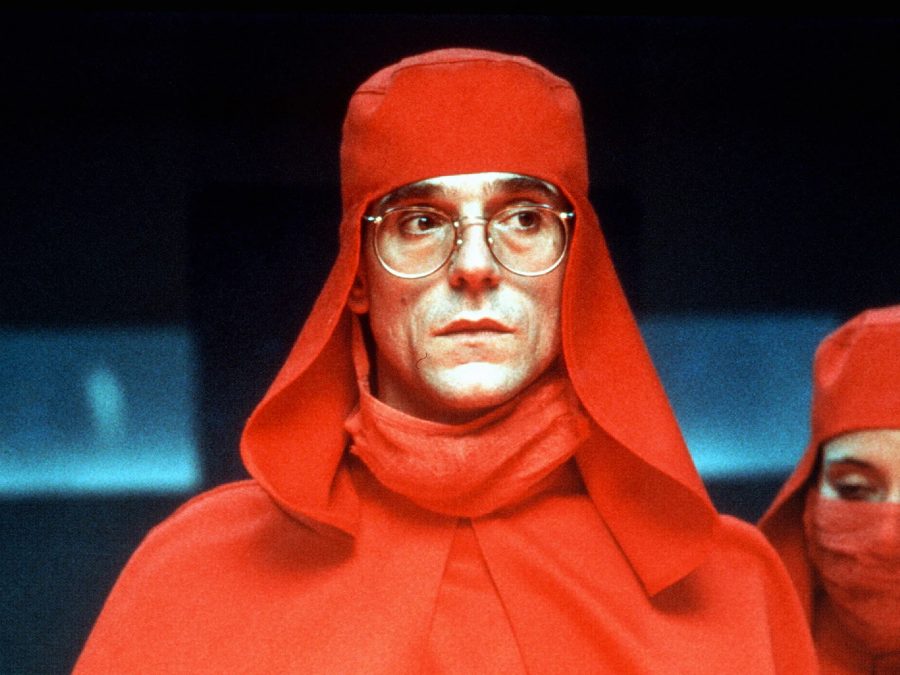On the belated and extremely exciting occasion of a new work by David Cronenberg incoming (another film with the title Crimes of the Future), we decided to delve back into his delectable, disgusting and deranged back catalogue and, purely for sport, rank the films of his fleshy oeuvre to best.
21. Fast Company (1979)
The top and bottom of this list feature Cronenberg’s duel forays into the car movie. If you looked long and hard enough at this glossy action quickie from 1979, you might see some glimmers of the fetishistic longing that were to form the backbone of 1996’s Crash, but there are probably better ways to spend your time. That’s not to say that this bouncy story of the Canadian rally driving scene isn’t a fun little runaround, but it’s the sort of film that provides kicks that many, many other filmmakers are able to supply in a similar style. By no means a write-off, and very fun in its own right, but the least Cronenberg-y Cronenberg film by a long shot. David Jenkins
20. Crimes of the Future
The second film Cronenberg made lends its title to his latest work, but that’s where the connection ends. This 40-minute, lightly-experimental work concerns a catastrophic plague caused by cosmetic products, which has wiped out the global population of women. Adrian Tripod is hunting for his mentor, dermatologist Anton Rouge, who may have also been wiped out by the virus. Shot without sound, an eerily calm voice-over from Tripod reveals how various men have adapted to their world without women, culminating in his joining a group of pedophiles who conspire to rape a young girl in order to impregnate her. It’s a harrowing watch, and certainly touches on themes that would become cornerstones of his future oeuvre – but even at a zippy 40 minutes, the film feels glacial. Hannah Strong
19. M. Butterfly (1993)
Cronenberg diehards consider his adaptation of David Henry Hwang’s play — itself a fictionalisation of a true espionage affair, as well as a rejoinder to Puccini’s opera Madama Butterfly — to be a minor outlier in the director’s filmography, a costume-drama mercenary gig in his first and only collaboration with Warner Bros. But even if there aren’t any geysers of viscera or pus-leaking orifices, he maintains his preoccupation with the body while blending in with more sedate, buttoned-up subject matter than usual. In the attraction between a French diplomat (Jeremy Irons) and the Pekingese opera singer (John Lone) he doesn’t realise isn’t a woman, the space between one’s legs can be a secret weapon or fatal weakness. The film’s daring genderplay (“Only a man knows how a woman is supposed to act,” posits one key line of dialogue) syncs up neatly with its invocation and dismantling of Orientalist stereotypes; the docility and submission expected of women by men is doubled in the patronising dynamic between white colonisers and the Chinese locals using that ignorance against them. It’s not quite sui generis in that unmistakably Cronenbergian way, but he wasn’t phoning it in, either. Charles Bramesco
18. Stereo (1969)
David Cronenberg’s first attempt at a feature film follows a group of telepathically gifted individuals undergoing a parapsychological experiment within the clinical halls of an academic facility, while a monotone voiceover recites beatnik technobabble over silent black white photography. We see the prolific director gestating themes of sexuality and the limits of consciousness in equal measure here. He’s evidently always had an exceptional eye for composition, with the artful framing of brutalist architecture, detached observational style and wide-angle shots subtly distorting the contours of reality and making for a mesmerising (yet not particularly captivating or enjoyable) watch. The seeds of a winning formula are readily apparent, but Stereo works more as a curio for Cronenberg enthusiasts and completists, rather than a standalone feature. Marina Ashioti
17. Cosmopolis (2012)
Find you a man who loves unfilmable novels as much as David Cronenberg challenge. If counter-culture classics such as Burroughs’ ‘Naked Lunch’ and Ballard’s ‘Crash’ weren’t enough, DC opted in 2012 to hire the world’s foremost teen heartthrob (Robert Pattinson) and plonk him in the middle of this chaotic and experimental Don DeLillo adaptation about an overconfident twentysomething billionaire’s trip across New York in a Limo to have his hair cut. Along the road he’s interrupted by a coterie of colleagues, hangers-on and financial gurus, as they drop obscure wisdom bombs on his lap and stoke his sense of existential dread, leading him to discover he’s the target for anti-captialist assassins. Minute-by-minute, it’s certainly a lively and involving work, though you can’t help but feel that its maelstrom of sloganeering (a big Cronenberg trait) is better served with the relatively slow and stately act of reading a novel. DJ
16. A Dangerous Method (2011)
This fascinating and fine film dares to dive into the technical minutiae of early 20th century psychoanalytic inquiry, and is also perhaps one of Cronenberg’s most mature films. That’s not to say it doesn’t push his abiding interests in the idiosyncrasies of the human body, but it does so in a way that avoids the usual flights of body horror fancy. At its centre is the respectful professional rivalry between Carl Jung (Michael Fassbender) and Sigmund Freud (Viggo Mortensen), whose work is altered and refined by the presence of patient-turned-academic Sabina Spielrein (Keira Knightley). A Dangerous Method offers a forensic examination into the idea that, in order for one to be able to deduce the psychological turmoil of others, one has to experience them directly themselves. As such, the film chronicles the coiled sexual dynamics between Jung and Spielrein that result in a strange intellectual transcendence. It’s perhaps a little subtle and stagey to really hit home dramatically, but definitely earns extra marks for drawing out a career-best performance from Knightley. DJ

15. Scanners (1981)
It’s a real mind-blower – wait, where are you going? – not just in the explosive displays of telekinetic might, but in the galaxy-brained expansion of its scope. What starts as a movie about X-Men-like civilians on the loose is warped by paranoid this-goes-all-the-way-to-the-top thinking into a larger conflict between warring factions, with no less than the fate of Earth at stake. The military-industrial complex gets in bed with Big Pharma to perpetuate a world-takeover scheme, but Cronenberg doesn’t bother introducing a noble counterpart to oppose them. The closest thing to a protagonist is a morally ambivalent pawn, similar to the rest of the characters in his ineffectual smallness when compared to the institutional workings of authority. He’s scrambling underfoot as titans in the shadows decide his fate, despite his ability to make their skulls blow up like rotten oranges. Perhaps the single most well-known sequence from Cronenberg’s body of work, it’s just the smashed cherry topping a deceptively dense treatise on superpowers, both the comic-book and geopolitical kind. CB
14. The Dead Zone (1983)
Cronenberg and Stephen King feels like a natural pairing; they’re both interested in the relationship between violence and humanity, and the here Jeffrey Boam adapts King’s 1979 novel about a mild-mannered teacher who awakens from a coma after five years only to discover he’s developed clairvoyant powers, often relating to troubling future events. Johnny Smith (an against-type Christopher Walken) retreats from society, horrified by his unwanted gift, but circumstance soon brings him into conflict with charismatic Senate candidate Greg Stillson (Martin Sheen), and he’s forced to make a difficult decision about the fate of the world. King adaptations are more miss than hit, but The Dead Zone is one of the better ones, even if the three-act structure is so rigid it detracts from the emotional pull of it all. Still, the climactic scene in which Stillson uses a baby as a human shield is burned into my retinas for life. HS
13. Maps to the Stars (2014)
For a while, it looked like Cronenberg’s final feature would be this acrid disemboweling of Los Angeles, a company town of sociopathic child stars, exploitative stage parents and cruel prima donnas clinging to their last scraps of fading glamour. If that makes this sound like a retread of the clichés lining Sunset Blvd. — an influence hungrily cannibalised here — rest assured that the incest and pyromania push the tone into a surreal, savage register all its own. Beyond a damning comment on Hollywood from a genius constantly lurking to the north, the notion that looks function as the regional currency makes way for rousing sexual gamesmanship as a uniformly superb ensemble including Robert Pattinson, Julianne Moore, Mia Wasikowska, and John Cusack all plot to dominate one another. The corpse-strewn Shakespearean ending could’ve been a fine concluding note for Cronenberg, proof that his advanced age had done nothing to dull the edge of his terrifically deranged filmmaking. Mercifully, it won’t be. CB
12. Eastern Promises
Viggo Mortensen’s second collaboration with Cronenberg also saw him return to London for a gritty story of forced prostitution and Russian mob enforcers. Naomi Watts is the midwife who inadvertently becomes embroiled in London’s seedy criminal underbelly when she delivers the baby of a teenage girl who dies in childbirth; Mortensen the hardened cleaner for the Russian mob tasked with putting an end to her snooping. There’s an iconic fight in a bathhouse, tattoos so realistic Mortensen was mistaken for a gangster offset, and Polish auteur Jerzy Skolimowski as Anna’s ex-KGB uncle – a recipe for a brutal thriller with deadly twists and turns, that manages to say plenty about redemption for violent men. HS
11. The Brood (1979)
It was only a matter of time until Cronenberg tackled motherhood, an experience that already sounds like something he came up with: your belly distends, a small parasitic creature feeds on your life force, your breasts emit fluid at unexpected intervals, morning sickness, placenta, umbilical cords, et cetera. His canniest move is to examine the siring of offspring as a psychological impulse as well as a bodily one, taking the deliciously cynical view of children as mere vessels for our grudges and fears. A mental patient under the sway of her therapist (played by Oliver Reed, a vainglorious addition to Cronenberg’s roster of evil doctors) generates dwarf-like spawn that scamper about doing her violent bidding, absorbing and acting on the deep-seated hatreds amassed from a childhood of abuse. In outré terms fitted snugly into the structure and visual language of slasher flicks, the film articulates every mom’s worst fear: an inability to stop one’s pride and joy from inheriting their defects, dysfunctions and traumas. CB

10. Spider (2002)
One for the “heads” as the kids like to say, 2002’s Spider sees Cronenberg decamping from his Toronto nest and heading to the grubby pubs and parlours of 1950s East London for this subtle but deeply affecting tale of childhood trauma and out-of-body projection. Ralph Fiennes plays the mumbling, grumbling Dennis “Spider” Cleg, a latch-key loner who’s recently been released from a mental institution and has decided to head back to his formative stomping ground to piece together a life-changing event from his youth, the title referring to a web he creates which stands in as the cross-crossing strands of his memory. Tipping its hat to Alfred Hitchcock’s Vertigo, we watch as the abused Spider sees his short-tempered father (Gabriel Byrne) shift his attentions from his demure, black-haired wife (Miranda Richardson) to a buxom blond strumpet (Miranda Richardson), which leads to a dark act and a brutal deception. It’s one of those films which becomes more Cronenbergian as its plot creeps forward, and it adopts the director’s oft-used cinematic mechanism of taking us into the subjective and often morally unreliable POV of its lead character. DJ
9. Rabid (1977)
Cronenberg’s twisted approximation of a zombie movie doesn’t skimp on the feral bloodlust. But for all the visceral terror of consumption and assimilation at the hands of our desiccated loved ones, he takes just as much interest in this sickness as a medical condition with unpredictable symptoms. The spread of a germ that sends the infected into carnivorous frenzies shows virality to be an equally social and biological phenomenon; the lean script balances insights addressing the macro (watch how quickly and ruthlessly the city of Montréal acquiesces to the deaths of its citizens) with the micro (the prehensile stinger tucked away in the armpit ranks among the master’s finest mutations). Bolstered by a performance of alternating determination and panic from Marilyn Chambers, making an auspicious foray into non-pornographic acting, this vision of a squishy, slimy, vomit-covered apocalypse established Canada’s most provocative filmmaker as someone with a consistent set of thematic preoccupations he’d continue developing over the next five decades – in other words, an artist. CB
8. A History of Violence (2005)
Based on the graphic novel of the same name by John Wagner and Vince Locke, Cronenberg’s 15th feature film marked a transition from the highly conceptual stories that preceded it; this one is a straight-up white knuckle thriller, as diner owner and family man Tom Stall finds himself thrust into the spotlight following a violent confrontation at his restaurant. The attention leads figures from his past back to Stall, and threatens the life he’s built for himself, but Stall isn’t going quietly. While A History of Violence might seem more straightforward than some of Cronenberg’s previous work, it is no less interested in the relationship between the human body and violence, and our infinite potential to inflict misery onto others in the name of self-preservation. HS
7. eXistenZ (1999)
eXistenZ builds on the ideas Cronenberg had introduced Videodrome while exploring themes similar to its Hollywood counterpart, The Matrix, which came out in the same year. Multilayered spaces and temporalities make up the fabric of the titular video game as players hop from one reality to the other. The game doesn’t involve a headset, console or controller, but rather requires the essential body modification elements characteristic of the Cronenberg canon. Players enter virtual realities by fondling a squelchy orifice plugged into the bottom of their spine. The world-building is entertaining and full of exciting twists that keep the viewer engaged; Jennifer Jason Leigh is terrific, Willem Dafoe is at his sleaziest, and Jude Law is (checks notes) running around holding a gristle gun that uses teeth as ammunition. The labyrinthine plot somewhat resembles the wandering chronology of modern NPCs and the artifice of dialogue-heavy RPGs, yet in satirising the interactive video game craze, the commentary veers perilously close to alarmist boomer logic. It’s not his most ambitious feature, but it’s wickedly entertaining, mad fleshy, grotesque, horny, and ‘90s as hell. MA

6. Naked Lunch (1991)
If there’s one thing that David Cronenberg is very good at it’s literary adaptations, and for his take on William Burroughs’ scandalous 1959 opus, he decided to draw fairly lightly from the prose and the story in order to produce a picture that was, a) semi-coherent, and b) not the most obscene thing ever committed to celluloid. It tells of a two-bit exterminator played by Peter Weller who descends into a long, violent and confusing head trip due to the fumes he uses to kill bugs. He assumes the guise of a secret agent and enters into a strange battle against a mysterious outfit known as Interzone Incorporated, and initially believes he must murder his philandering wife. Within the director’s canon of films which excavate the limits of the human body, this one precedes titles like eXistenZ, Videodrome and A Dangerous Method in presenting the images and dramas we build inside our own minds – in this instance, fuelled by toxic substances. DJ
5. Shivers (1975)
Shivers was released the same year as JG Ballard’s novel High Rise, which focused on a luxury apartment block which descends into chaos as the building’s rigid class structure breaks down. Great minds think alike – Cronenberg’s first full-length feature is also set in an affluent apartment complex, where a sexually-transmitted parasite causes the residents to turn on each other in sexually violent ways. It’s easy to see the link between Shivers and his previous film, Crimes of the Future, but Shivers definitely has a little more polish and aims for shock value over a more cerebral experience. At the time Shivers was, uh, not a critical success (and it cost Cronenberg his apartment once his landlord caught wind of the films he was making) but it’s a fun, gross take on the pandemic genre, and sex-crazed zombies are a curiously untapped horror trope. HS
4. Dead Ringers (1988)
The only thing better than Jeremy Irons as a prickly gynecologist whose fascination with the female reproductive system seems to extend beyond academic curiosity? Jeremy Irons as two prickly gynecologists whose fascination with the female reproductive system seems to extend beyond academic curiosity! He gives an all-timer double-duty performance as Beverly and Elliot Mantle, doctors and twins identical in appearance yet complementary in disposition, forming a lecherous yin-yang as alpha Elliot seduces their patients before passing them as hand-me-downs to beta Beverly. The arrival of the effervescent Geneviève Bujold shatters their fragile symbiosis and sends Beverly into a yonic mania, commissioning custom surgical tools fit to plumb the alien vaginas tormenting his fevered imagination. As the brothers frantically try to reestablish their equilibrium, they come to resemble the id and superego of a single psyche split in twain, trying in vain to resolve itself. For Cronenberg, it’s right in his sweet spot, yet another closed system disrupted and evolving in frightful, unnatural directions. CB

3. The Fly (1986)
Cronenberg’s remake of the schlocky 1950s sci-fi monster flick sees Jeff Goldblum giving the performance of a lifetime as Seth Brundle. The Fly kicks things off in media res, with a wayward scientist’s molecular teleportation invention attracting the attention of science journalist Veronica Quaife (Geena Davis). It’s the 1980s – the golden days of mind-blowing practical effects – so trust Cronenberg to deliver a gnarly masterpiece about scientific hubris and the dangers of progress. Seth Brundle’s gradual and grotesque transformation plays out as one of the most genuinely terrifying slow burns in cinema history, with visceral disgust underpinning depth, wonder, empathy and pathos. And talk about on-screen chemistry! Goldblum and Davis are both in top form. Every scene between Seth and Veronica in the first two acts brims with buckets of sexual tension (the pair were together at the time and tied the knot a year after the film was released). It’s one of the best sci-fi horror films ever made, and scores a few extra points for making science and journalism seem like sexy professions. MA
2. Videodrome (1983)
James Woods gives an all-timer performance as smut peddaling television exec Max Renn in this psycho-thriller which has long been a staple for the midnight movie scene. After discovering the disturbing snuff television channel known only as Videodrome, Renn becomes obsessed, seeking to uncover the secrets even as it threatens the life of his girlfriend Nicki (played by the magnificent Debbie Harry) and the truth about the channel becomes more and more twisted. The threat of cultural collapse in American society due to aggressive sexual and violent appetites has been a long-time obsession for Cronenberg, but nowhere is this more apparent than in Videodrome, an eerie slice of the grotesque that delivers a masterclass in special effects and still holds up in our present hyper-connected world of constant media consumption. Long live the new flesh indeed. HS
1. Crash (1996)
Some people get their rocks off by canoodling in bed – with themselves or another. There are those who glean sexual gratification from, say, sneezing in someone’s armpit. Crash is, in a sense, a film about the latter category, a steely essay that zeroes in on a group of sexual outlaws searching the untapped corners of society in to attain their erotic highs. Adapted from JG Ballard’s 1973 novel of the same name, Cronenberg’s film stands as perhaps the single, teetering apex of a cinematic project which has consistently explored the human capacity for both physiological and psychological desire. It is, at its core, the sweet tale of a group of furtive auto fetishists who are well aware that their attempts to feel good could easily lead them to being left as a battered corpse on a motorway hard shoulder. James Spader and the great Deborah Kara Unger play the Ballards, a hot couple in a masochistic open marriage who fall in with a crew of hardcore metal-heads who re-enact the car wrecks of beautiful Hollywood celebrities. Even though the moral outrage the film caused was largely aired by a group of conservatives who hadn’t actually seen the film, it’s still so creatively provocative that if they had seen it, their heads may have exploded (see Scanners). DJ
The post David Cronenberg – ranked appeared first on Little White Lies.


0 Comments